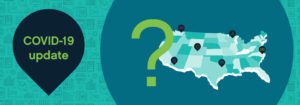With the continued frustration over rising healthcare costs, the White House has made prescription drug reform a top priority. Thomas Beaton of HealthPayerIntelligence recently published an article which shares that payers are eager to see this effort succeed as they also search for ways to best address the high prices of certain medications. In 2016, the U.S. spent $450 billion on prescription drugs, with specialty drugs accounting for 1/3 or about $150 billion of U.S. drug spending. These numbers are staggering especially when you consider that only 2 percent of prescriptions in the U.S. are considered specialty. How can payers control these rising drug costs and take matters into their own hands? To start, they need to identify high-cost members and the prescribed medications to find opportunities for savings.
Gain a bigger view: Specialty drug therapies are managed across various benefit structures and can include different routes of administration. As a result, it’s important to look at claims processed under both medical and pharmacy benefits to understand when and where specialty pharmacy drugs are being obtained and at what cost.
Target high-risk members: Top conditions treated by specialty drugs include multiple sclerosis, rheumatoid arthritis, growth hormone deficiency, hepatitis C, cancer, hemophilia, and immune disorders. Analytics can help bring together disparate data sources to better identify the conditions most impacted by these drugs and opportunities to refine benefit structures, improve adherence and optimize care management programs – all of which can help decrease costs while improving outcomes.
Solutions like MedeAnalytics Healthcare Economics and Population Heath effectively links medical, pharmacy and other data sources to give payers a deeper understanding of specialty pharmacy utilization and costs.
St. Joseph Hospital, part of Covenant Health, was looking to cut overall costs within their employee health plan and found that more than half of their pharma spend came from specialty drugs. To better manage their overall pharmacy spend including both traditional and specialty drugs, they turned to MedeAnalytics.
With MedeAnalytics Population Health, St. Joseph Hospital gained insight into costs and could pinpoint patterns and correlations that revealed opportunities for drug savings, leading them to understand which areas of their pharmaceutical spend needed the most attention. By analyzing the organization’s pharmaceutical data, St. Joseph Hospital achieved their goal of reducing overall pharmaceutical costs. Interested in learning how analytics can help your health plan alleviate rising drug prices? Visit our Population Health solutions page, read the St. Joseph Hospital case study or contact us here.
Get our take on industry trends
Avoid COVID-19 modeling pitfalls by eliminating bias, using good data
COVID-19 models are being used every day to predict the course and short- and long-term impacts of the pandemic. And we’ll be using these COVID-19 models for months to come.
Read on...Population Health Amid the Coronavirus Outbreak
In speaking with many colleagues throughout the provider and payer healthcare community, I’ve found an overwhelming sense of helplessness to the outbreak’s onslaught. This is exacerbated by the constant evolution of reported underlying medical conditions that indicate a higher risk of hospitalization or mortality for a coronavirus patient.
Read on...COVID-19 and the Financial Storm Ahead for Providers
Across the country, healthcare organizations are seeing 40%-80% declines in monthly charges with some of the most profitable services lines only seeing 20% of their normal monthly volumes during the pandemic.
Read on...3 Steps Any Healthcare Organization Can Take to Improve Enterprise Analytics
By Kristin Weir When it comes down to the most basic purpose of why organizations use analytics, it’s simple: they…
Read on...


